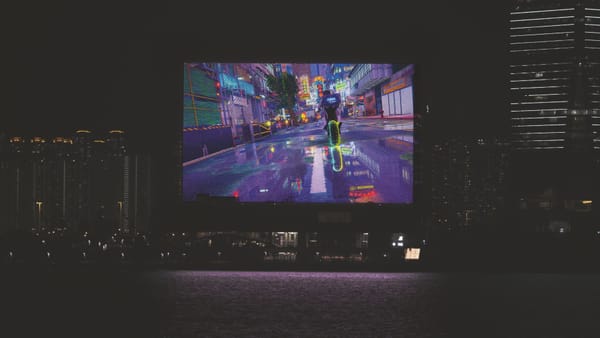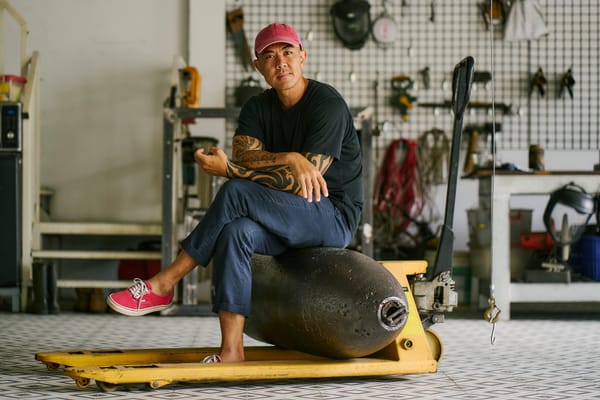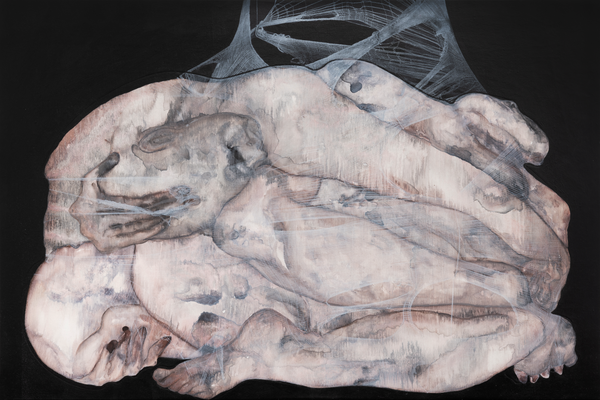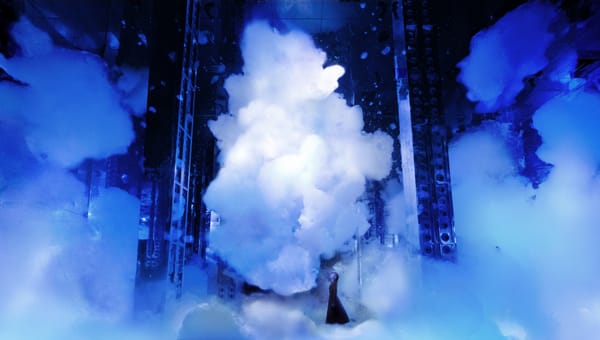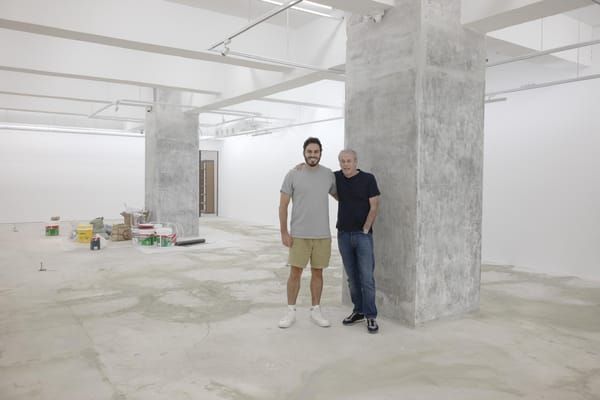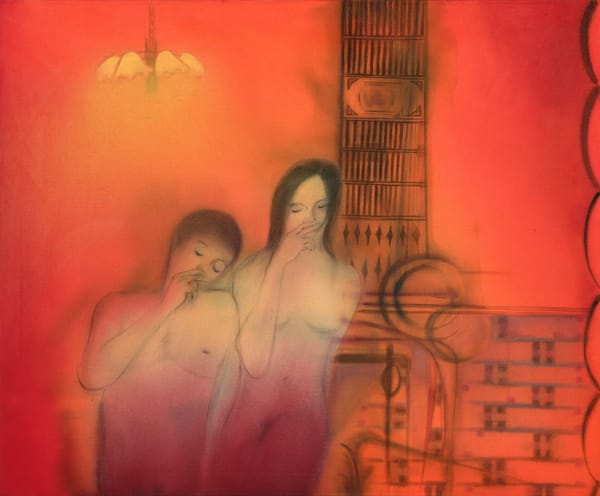People
Untangling the Past: Interview with Sancintya Mohini Simpson

Born in Brisbane in 1991, Sancintya Mohini Simpson is an artist and researcher whose work recontextualizes the colonial history of Indian indentured labor in the South African province of Natal—now KwaZulu-Natal—from 1860 to 1911, during which time over 150,000 Indians were shipped to the continent to work on British-owned sugar plantations. Drawing on her maternal lineage, Simpson’s practice—spanning painting, video, poetry, and performance—navigates the complexities of migration, memory, and trauma by addressing bias and gaps within the colonial archive.
Simpson was one of 70 participating artists and collectives from more than 30 countries to feature in the 11th Asia Pacific Triennial of Contemporary Art (APT11) at the Queensland Art Gallery & Gallery of Modern Art (QAGOMA). The triennial focused on themes of caring for natural and urban environments, reviving cultural heritage, and examining how histories of migration and labor have shaped our contemporary world. Simpson’s painting, kūlī/khulā (2024)—commissioned for APT11—depicts a serene palm tree landscape that upon closer inspection reveals echoes of the colonial past.
I would like to begin by asking how you became an artist—what led you to study photography and later, creative writing?
There’s a certain mystification surrounding the how and why one becomes an artist. This mystification is part of the ‘‘gatekeeping’’ which is so ingrained in the power systems of the art world. To be honest, I was just always making art. It was a way of understanding myself, and making sense of things—especially history. Specifically, my own experience, and how it has been informed by my surroundings. Coming from a lower socioeconomic background, there was no safety net. Early on, I was trying to balance a day job with my artistic practice. As for the photography degree [at the Queensland College of Art, Griffith University], it allowed me to build a career as an artist and work at the same time. Before I went on to study creative writing, I worked in an arts administration role. Later I made the decision to leave my position in the arts to work full time as an artist. Now, I have the time and space to focus on my work, which is a very privileged position, though a precarious one.

Installation view of SANCINTYA MOHINI SIMPSON’s kuli/khula, 2024, color on wasli paper, 130 × 1210 cm. Photo by Chloe Callistemon. Courtesy the artist and Milani Gallery, Meanjin/Brisbane.
In your practice, what is the core of your research, and how do you apply it to fill the gaps in your lineage?
As someone who has inherited these histories physically, in my body, I have come to realize I need to care for myself as well as for these histories. In terms of my childhood and life experiences, I see my practice as a way to process, understand, and acknowledge how these things have impacted me. If I did not have that, I would arguably be a very different person, maybe more bitter, someone with less self-awareness or understanding. I may even be continuing the cycle of generational trauma. But I have the ability to step back and reflect, something that previous generations did not have—if you are constantly fighting for survival, you do not have the opportunity to process what is going on around you. So, my work is about recognizing, repairing, and caring for these histories, as opposed to removing or changing them. [I hope that] the community can view these works in the gallery space and see the stories and histories they represent.

Detail of SANCINTYA MOHINI SIMPSON’s kuli karambu, 2021, watercolor and gouache on handmade wasli paper, 88 × 63 cm. Photo by Carl Warner. Courtesy the artist and Milani Gallery, Meanjin/Brisbane.
Speaking of community, what role does it play in your practice and how have you formed and fostered such relationships?
It took a while. If you are actively looking to give, things come naturally. It is an exchange, a sharing process. It is about asking: what have you got to share? What do you want to give? The artists I admire most are those who forge connections with others, such as Shivanjani Lal, Judy Watson, and Gordon Hookey—they make work because they have stories to tell, while taking ethics into consideration. As a younger artist, you often don’t have much agency. For me, working in an institution is restrictive; it is what I would call “inauthentic.” A cultural or community framework doesn’t exist in a university or academic environment, especially if those who are assessing you lack the proper understanding or life experience. Over time, you’re able to say yes or no to opportunities. I have my own criteria and reasons for why my work needs to be seen that way, or why it should exist. And that comes from my own understanding. Making work for other people or for everybody is not the right approach, and institutional approval is not a sustainable method. You have to decide who you are accountable to. For me, I’m accountable to the community. This includes not only myself and my family, but the “wider legacy,” if you like.
I would like to hear more about your technical and material process. Beyond the historical and cultural context of your work, how important are these aspects?
The process is where you share a relationship with the work. My idea of process is constantly piecing things together and trying to understand why I would choose a particular material for one work, while using something completely different for another. Materials can express a great deal, and they carry their own histories, but I do a lot of research by looking into historical archives, records, and academic documents, attempting to insert my personal family history into this specific context. It often leads to a different mode of thinking. In my own work, everything references real elements from my ancestor’s lives, for example: the mill in my painting kūlī karambu (2021) is from an archival photograph I collected from a place that a family member might have been taken to.
Since your past work primarily dealt with personal history, you worked mostly with family members. For APT11, you collaborated with a broader range of people and artists. How did this impact your practice and process?
My approach includes exploring photographs, oral histories, songs, records, and written accounts. Yet, within a decolonial framework, I recognize the limitations of these archives. There is an ‘‘unseen’’ element to these histories—a space that must remain open to the unknown and unrecorded. With the capacity to undertake in-depth research [for APT11], I felt ready to realize my previous work, adding my family’s history to a broader, interconnected story. It acknowledges histories from Fiji, the Caribbean, and Mauritius—each with unique nuances, yet undeniably part of a singular, shared landscape. I want to acknowledge that these stories are not isolated but deeply intertwined, reflecting collective trauma and resilience. So for me, it was a really wonderful opportunity at the APT11 to look at not just my own family history, but to look beyond, to look forward. It's such a big history. The more you delve into it, the more you realize you don’t know.
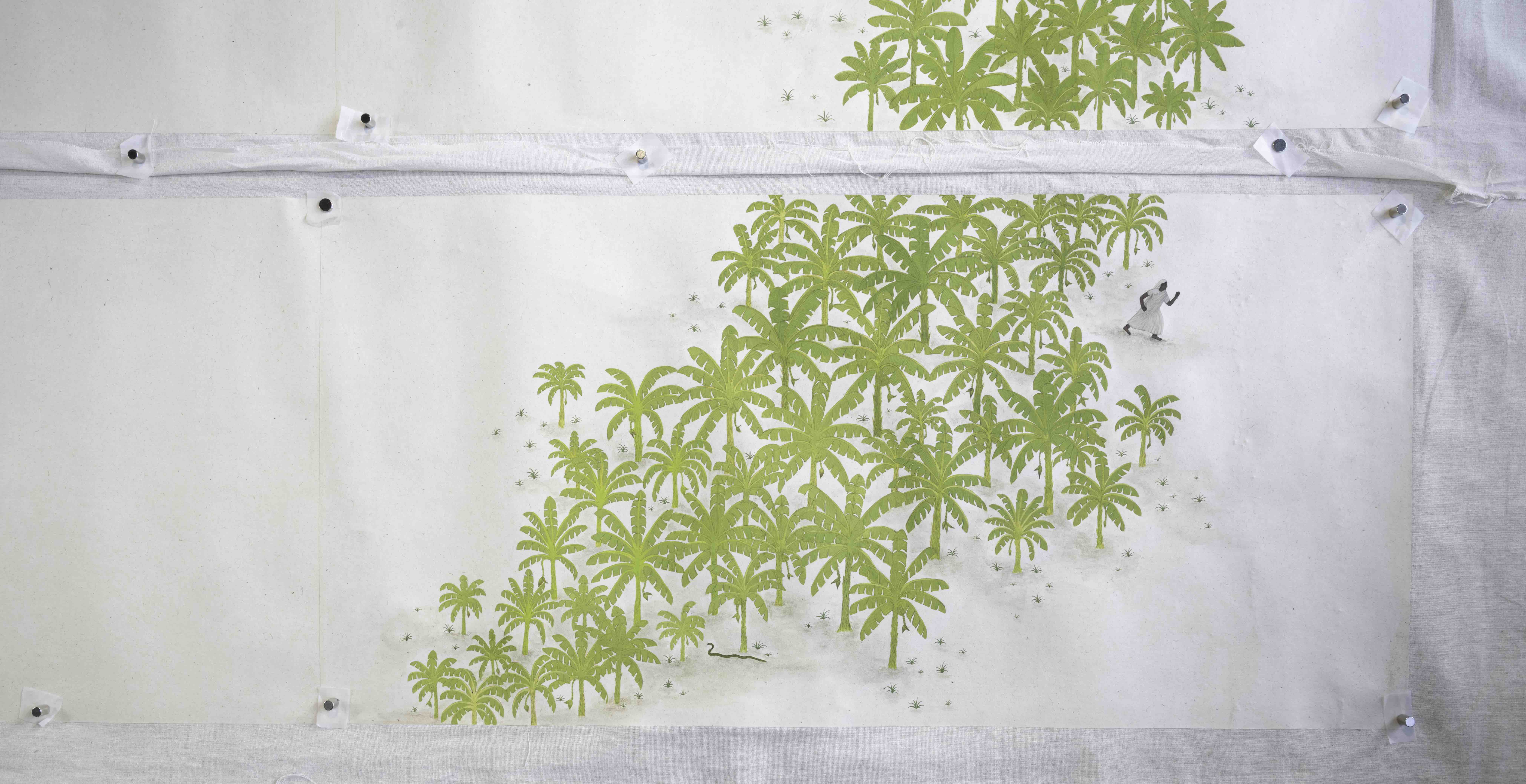
Detail of SANCINTYA MOHINI SIMPSON‘s kuli/khula in the artist’s studio, Courtesy the artist and Milani Gallery, Meanjin/Brisbane.
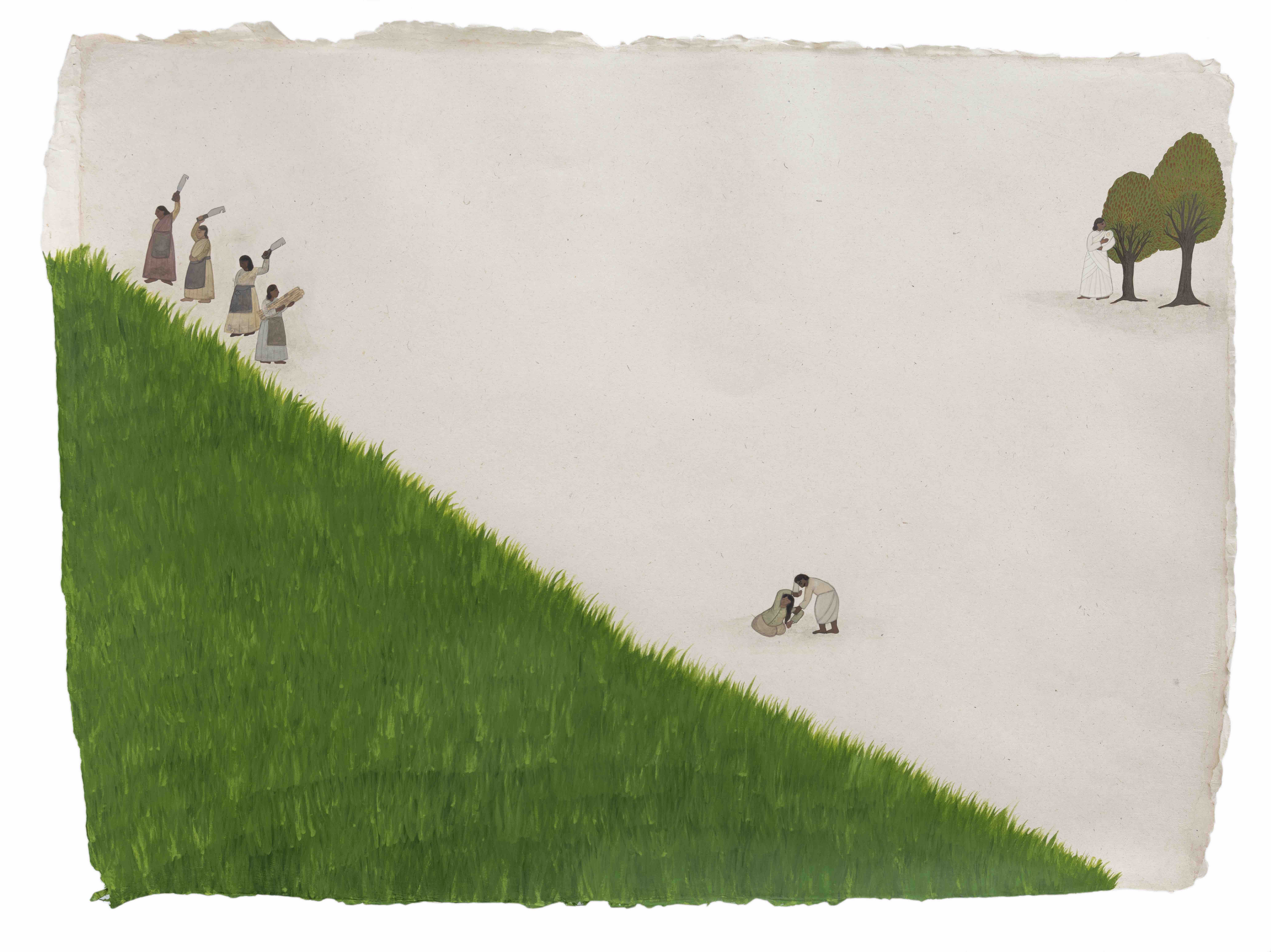
Detail of SANCINTYA MOHINI SIMPSON’s kuli karambu, 2021, watercolor and gouache on handmade wasli paper, 88 × 63 cm. Photo by Carl Warner. Courtesy the artist and Milani Gallery, Meanjin/Brisbane.
How do you feel about the way viewers receive your work, and does this affect or alter your process?
When people engage with my work, they often discover fragments of their own histories within it. I have found friends, colleagues, and family who are connected to these histories from all places. Showing this kind of work in subtropical Queensland means that it will always exist in the context of the sugarcane industry. There are also pineapples and bananas. The landscape is familiar to people who grew up here, and I think audiences are going to notice these threads and connections. But it really depends on what they are familiar with and what resonates with them. I think for audiences there’s always a takeaway, even if it is simply the realization that this particular industry goes beyond these geographical borders. As humans, we bring our own histories wherever we go, so the expectation that we think and respond to everything in the same way doesn’t make sense.
Antonia Ebner is a former editorial intern at ArtAsiaPacific.
